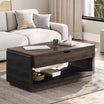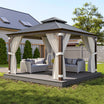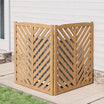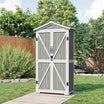Thinking about upgrading to a 75-inch TV? Before you buy, you should know it measures about 65.4 inches (166 cm) wide and 36.8 inches (93.4 cm) high, not including the base or frame. Different brands have different frame thicknesses, with slimmer frames giving you a more immersive experience.
Don't just measure your wall space or TV stand. Many buyers overlook this crucial step and end up with buyer's remorse. Taking a few minutes to plan your room layout and viewing distance now can save you headaches later and ensure your new entertainment centerpiece fits perfectly in your home.
Understanding Television Screen Size
When you hear "75-inch TV," that's the diagonal measurement - from one corner to the opposite corner. This standard measurement helps you visualize the TV in your room.
Large TVs like 75-inch models have become popular because they create a movie-like experience at home. The bigger screen makes your content more engaging by filling more of your field of vision.
But size isn't everything:
- A 75-inch TV works great in spacious living rooms or home theaters
- In smaller rooms, an oversized TV can actually make viewing uncomfortable
- Finding the right balance is key for comfortable viewing
The most important factors are your room size, seating distance, and how you'll use the TV. These practical considerations matter more than simply buying the biggest screen you can afford.
How to Calculate 75-Inch TV Dimensions?
The 75-inch measurement refers to the screen's diagonal length, which is the standard way TVs are measured worldwide. To find the actual width and height, we need to do some simple math based on the 16:9 aspect ratio used in modern TVs.
Measuring the Diagonal
TV size is measured diagonally from one corner of the screen to the opposite corner. This measurement doesn't include the bezel or frame. So when you see "75 inches" on a TV label, that's just the screen's diagonal length.
Understanding the Aspect Ratio
Most modern TVs use a 16:9 aspect ratio. This ratio tells you how wide the screen is compared to its height. It helps you visualize the rectangular shape of your TV screen.
Calculating Width and Height
Using the diagonal length and aspect ratio, you can easily figure out the actual width and height. The formula comes from the Pythagorean theorem:
- Width = (Diagonal ÷ √(16² + 9²)) × 16
- Height = (Diagonal ÷ √(16² + 9²)) × 9
For a 75-inch TV, this gives you a width of about 65.4 inches and a height of 36.8 inches. Knowing these numbers helps you determine if the TV will fit in your space.
Consider the Impact of the Bezel
Remember that these calculations only cover the screen size, not the bezel (frame). The total TV size includes the bezel, which varies between brands and models. Thinner bezels give you more screen space and a more immersive viewing experience.

Comparing 75-Inch TVs to Other Sizes
When picking a new TV, it's helpful to see how a 75-inch screen compares to other common sizes like 65 and 85 inches. Each size offers different benefits for various viewing preferences and rooms.
- A 75-inch TV offers a much more immersive experience than a 65-inch model. Your movies and shows will feel more cinematic, but the TV won't overwhelm most rooms.
- While an 85-inch screen provides an unmatched viewing experience, it dominates the space. These massive TVs work best in large living rooms or dedicated home theaters.
- The 75-inch size hits a sweet spot. It gives you a big screen for movies and games while still fitting well in most living spaces.
The visual impact of a 75-inch TV is impressive. It creates a canvas that brings your content to life with sharp details, balancing powerful visuals with everyday practicality.
By comparing these sizes, you can better understand how a 75-inch TV combines immersive viewing with practicality, helping you choose what works for your needs and space.
What to Look for When Buying a 75-inch TV?
Excited about getting a 75-inch TV? Before you buy, consider these key factors to ensure your new TV fits perfectly in your space and matches how you like to watch.
Room Size and Layout
- Room size: Make sure your room can fit a 75-inch TV with enough viewing distance. The sweet spot is between 9.4-15.6 feet away (1.5-2.5 times the screen's diagonal).
- Wall mounting space: If mounting on a wall, verify you have enough width for both the TV and its mounting hardware. Leave extra space around the edges for proper ventilation and heat dissipation.
Display Technology
Which type is best for your needs and budget? LED TVs are more affordable but offer less brightness. OLED TVs provide amazing contrast and true blacks—perfect for movie nights in dark rooms. QLED TVs deliver bright, vivid colors that adapt to your room's lighting conditions.
Resolution
Top-end TVs now feature 4K resolution, while 8K offers even sharper details. Check that your content sources (streaming services, cable) support these resolutions to get your money's worth. Also look for HDR support, which enhances color range and contrast for more lifelike images.
Placement and Mounting of the TV
- For wall mounting, position the center of the TV at eye level when you're seated for maximum comfort.
- If using a stand, make sure it's sturdy and complements your room's style. Don't forget about cable management to keep everything looking neat.
Related reading: TV Stand vs Wall Mount: Which is Better for You?
Sound System
Most big TVs have disappointing built-in speakers. Plan to add a soundbar or home theater system to match your TV's impressive visuals with equally impressive audio.
Connectivity
Check for enough HDMI, USB, and Ethernet ports, plus built-in Wi-Fi to connect all your devices—gaming consoles, Blu-ray players, and sound systems. Considering all these factors will help you choose a TV that fits both your space and lifestyle perfectly.
How to Choose a TV Stand for a 75-inch TV?
Picking the right TV stand creates both a comfortable and stylish entertainment space. Here's your guide to finding the perfect TV stand for 75-inch TVs.
Size and Fit
- Choose a stand about 20% wider than your TV to accommodate the bezel, improving both appearance and stability.
- Position the stand so the center of your TV screen aligns with eye level when seated for optimal viewing comfort.
- Ensure the stand is deep enough for your TV's base, plus extra space behind for cable management.
Materials, Style, and Color
Your stand's material affects both style and durability. Common options include solid wood, MDF (medium-density fiberboard), metal, and glass. Solid wood farmhouse TV stands offer strength and rustic charm, while MDF and glass cabinets create a modern, clean look.
Don't rush your color and design choice. Your TV stand should complement your existing sofas, rugs, and wall colors to maintain a harmonious look throughout the room.
Functionality and Storage
If you have gaming consoles, media players, or DVD collections, look for stands with sufficient drawers, cabinets, or shelves. Good ventilation prevents equipment overheating, while built-in cable management keeps everything tidy.
Some stands, like the Belleze Entertainment Modern TV Stand, feature built-in RGB LED lighting with music synchronization, adding ambiance to your space through different lighting effects that respond to your music's rhythm.

Types of TV Stands
- Fireplace TV stands: These include integrated electric fireplaces, adding warmth and ambiance while supporting your TV and storing media equipment.
- Corner TV stands: Designed to fit in room corners, these space-savers allow your TV to face the wider room area, perfect for smaller spaces.
- Floating TV stands: Wall-mounted to save floor space, these typically feature hidden cable management for a clean look.
- Low-profile TV stands: Ideal for large flat-screens, these position your TV lower visually, creating a wider viewing angle for better comfort.
How Far Should I Sit From My 75-inch TV?
For a 75-inch TV, the best viewing distance is between 9.4 to 15.6 feet (2.9 to 4.75 meters). This range is about 1.5 to 2.5 times the diagonal screen size.
At this distance, you can:
- See the full picture clearly without constantly turning your head
- Experience better immersion in what you're watching
- Reduce eye strain during longer viewing sessions
If you have a 4K or higher resolution TV, you can sit a bit closer to appreciate all the fine details in the picture.
Position your TV to avoid glare and reflections from windows and lights. This prevents eye strain and ensures good visibility whether you're watching during the day or at night.
Consider adjusting your seating based on what you're watching:
- Movies: Sit farther back for a theater-like experience
- Sports or TV shows: Move closer to feel more involved in the action
Taking everyone's comfort and viewing habits into account will help create the best viewing experience for the whole family. Find a distance that works for most situations, but be flexible when needed.
Conclusion
A 75-inch TV screen typically measures 65.4 inches wide by 36.8 inches high, based on the standard 16:9 aspect ratio. Remember that actual dimensions may vary slightly between brands and models, so always check the specific measurements for the TV you want.
Before bringing your new big-screen home:
- Measure your space carefully, including width and height
- Consider your TV cabinet dimensions
- Plan how other furniture will be arranged around it
- Check that the viewing distance is comfortable
- Ensure the TV will be at eye level when seated
Taking these simple steps ensures your new 75-inch TV fits perfectly in your space and provides the best possible viewing experience. Your eyes (and family) will thank you for planning.
Frequently Asked Questions
How Do I Ensure that my 75-inch TV is Properly Secured?
Well, ensure you use a VESA-compliant wall mount or TV cabinet fitting the weight and dimensions of your TV.
How do I Check the Picture Quality of a 75-inch TV?
Check the sharpness, color saturation, and contrast of your TV when playing high-resolution video content before buying it, particularly when it comes to playing 4K or HDR content.
One should see whether the picture is clear and sharp, whether colors are vivid and rich, and whether details in dark scenes are distinguishable. It is also advisable to check the picture quality by viewing the TV from different angles.
What is the recommended mounting height above a wall for a 75-inch TV?
The wall height for mounting a 75-inch TV is supposed to make sure the middle of the TV rests on a point equal to the viewer's eye level. That is within 42–48 inches or roughly 107–122 centimeters.
Your exact mounting height will also need to be tailored to your space layout and the viewer's angular needs to achieve the most comfortable viewing experience.
Read More:












































Leave a comment
This site is protected by hCaptcha and the hCaptcha Privacy Policy and Terms of Service apply.